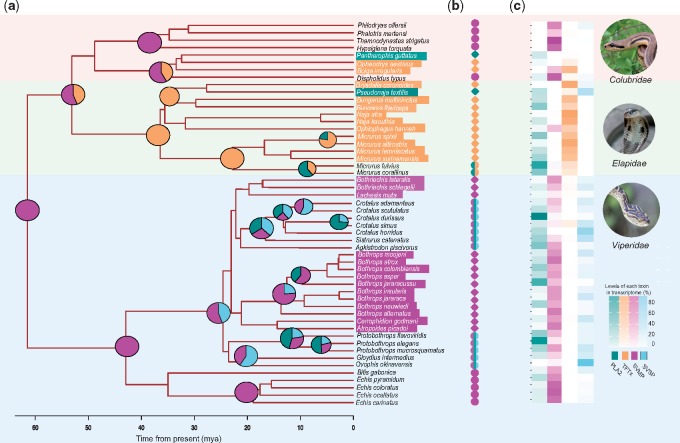Fig. 3.
Evolution of the four major venom toxins and convergent phenotypic regimes in snakes. (a) Pie charts at selected nodes represent ASRs of the four major toxins (PLA2, TFTx, SVMP, and SVSP). For clarity, only the nodes where substantial changes in toxin levels took place are shown. Because snake venom composition has evolved dynamically, the ancestral venom (at the root 60 Ma) is difficult to estimate. Although only SVMP was reconstructed as present with a high degree of likelihood, albeit at low levels in our analysis, we would not rule out the presence of other venom components, particularly at low levels. For instance, SVSP does occur in all three families, though not detected at the root. Also, ancestral recruitment of a number of toxin compounds has been argued previously (Fry and Wüster 2004). Lineage-specific specialization occurred relatively recently, in the past 20–40 My. (b) Common selective regimes estimated by SURFACE are indicated by symbols. The analysis was conducted using the first two PCA axes of the ten-toxin covariance matrix, but most of the convergent strategies are centered on the four major toxins. Highlighted species names and diamonds represent optima attained by many species via multiple convergent shifts. Circles represent convergent optima due to single shifts. Symbols are colored based on the toxin axes the estimated optima lie on (fig. 2 and supplementary fig. S12, Supplementary Material online). (c) Tiles represent the relative abundance of venom toxin in extant snakes. The overall trend is that starting from a relatively undifferentiated ancestor, snakes have increasingly focused on specific toxin families, occasionally investing in new toxin categories for their arsenals (e.g., PLA2s and SVSPs).

